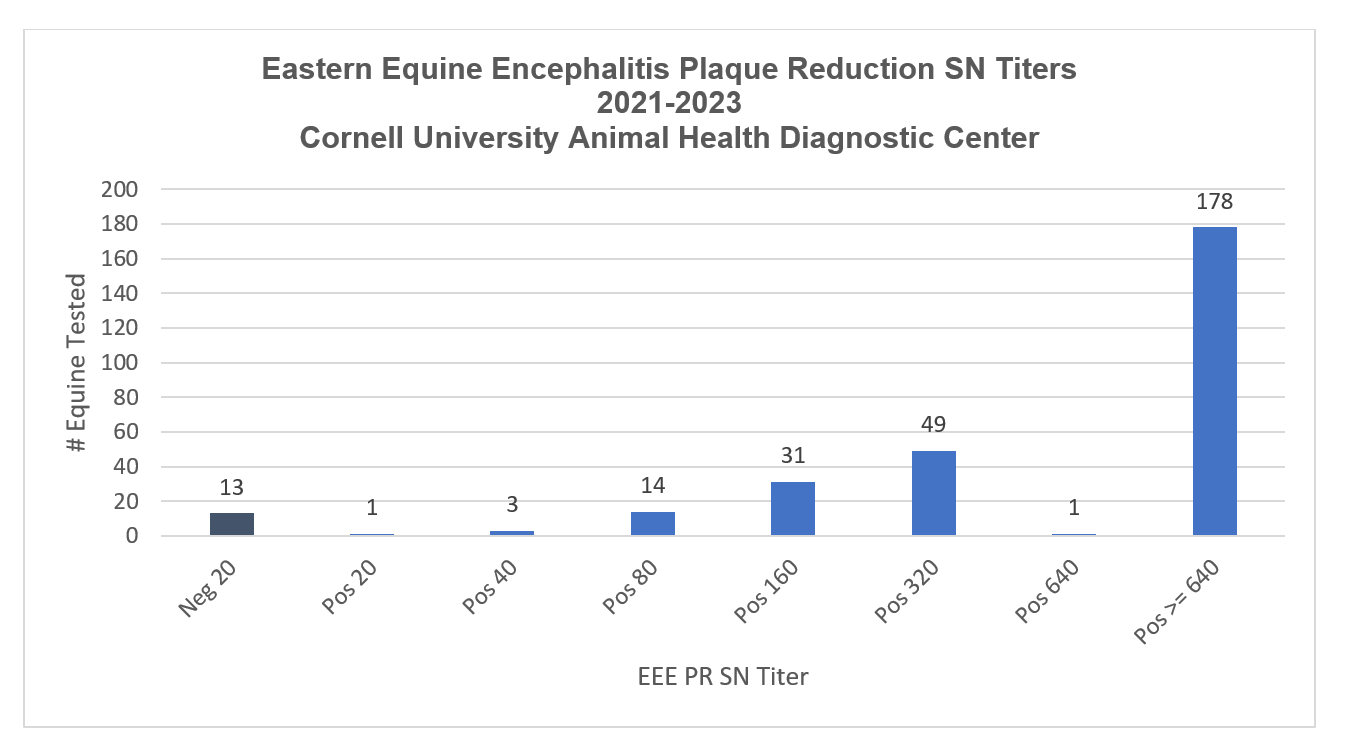Eastern Equine Encephalitis Plaque Reduction Serum Neutralization
Eastern equine encephalitis (EEE), Western equine encephalitis (WEE) and Venezuelan encephalitis (VEE) are mosquito born, zoonotic viruses in the genus Alphavirus, family Togaviridae. Only EEE is endemic in the US and is therefore the focus of diagnostic testing and antibody detection at the Animal Health Diagnostic Center (AHDC). Several domestic animal species are at risk and have been diagnosed with EEE, and most often clinical disease presents in equids, humans, ratites, and rarely marine mammals. Wild birds are the reservoir for EEE and mammals are dead end hosts, although they can develop short periods of viremia.
EEE cases occur in the summer through late fall in the northeastern US due to the vector season. The incubation period for EEE can be up to 14 days. Equids present with a fever initially and then neurologic signs, including head pressing, blindness, ataxia, paralysis, convulsions and recumbency followed by death. The case fatality rate can be as high as 90% in unvaccinated animals. Equids that do survive typically have permanent neurologic deficits. Diagnosis of EEE in a clinical suspect is made by serologic detection of EEE IgM antibodies (antibodies made initially after exposure to the virus) which is performed at the USDA National Veterinary Services Laboratory (NVSL) in Ames, Iowa, or by detecting the viral RNA by PCR in central nervous system tissue or EDTA whole blood at the AHDC. Past seasonal summaries for EEE cases diagnosed at the AHDC are available for 2020 and 2023.
There are multiple commercially available EEE vaccines labeled for equids. These are killed vaccines, and per the AAEP vaccination guidelines, EEE is an annual core vaccine for all horses in the US. Veterinarians and horse owners may want to check EEE serum antibody titers to ensure horses have produced antibodies following vaccination. The AHDC offers the EEE plaque reduction serum neutralization (PRSN) test for this purpose, which is performed on serum samples only. The chart below represents EEE PRSN titers submitted to the AHDC from the inception of the test in 2021 through December 31, 2023. A total of 290 equid samples were tested and 178 (61%) were at or above the highest serial dilution of 1:640. Note: Antibody titers at the AHDC are reported as the reciprocal of the dilution at the endpoint, e.g., 1:64 = 64. There is no established titer cut off above which protection from EEE infection is guaranteed. Therefore, this data is provided to demonstrate the range and distribution of titers seen through testing samples at the AHDC.

Reference
Spickler, Anna Rovid. 2017. Equine Encephalomyelitis.
Retrieved from http://www.cfsph.iastate.edu/DiseaseInfo/factsheets.php.


